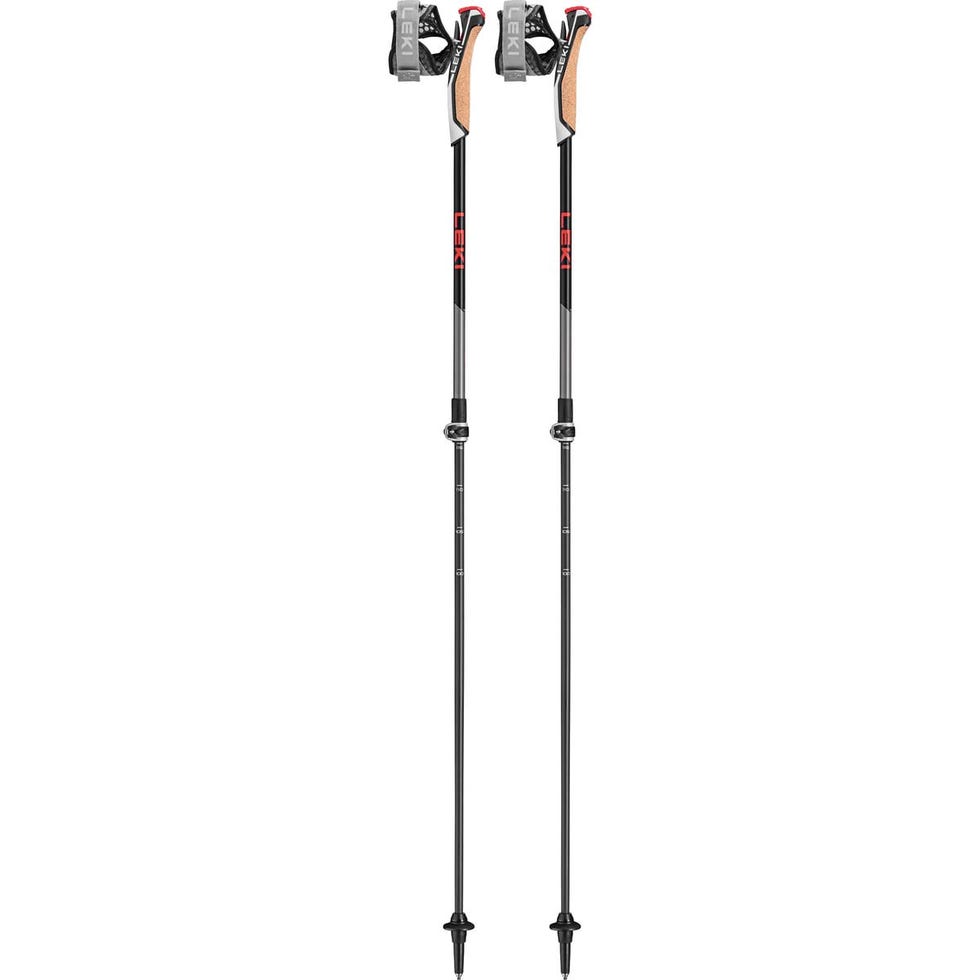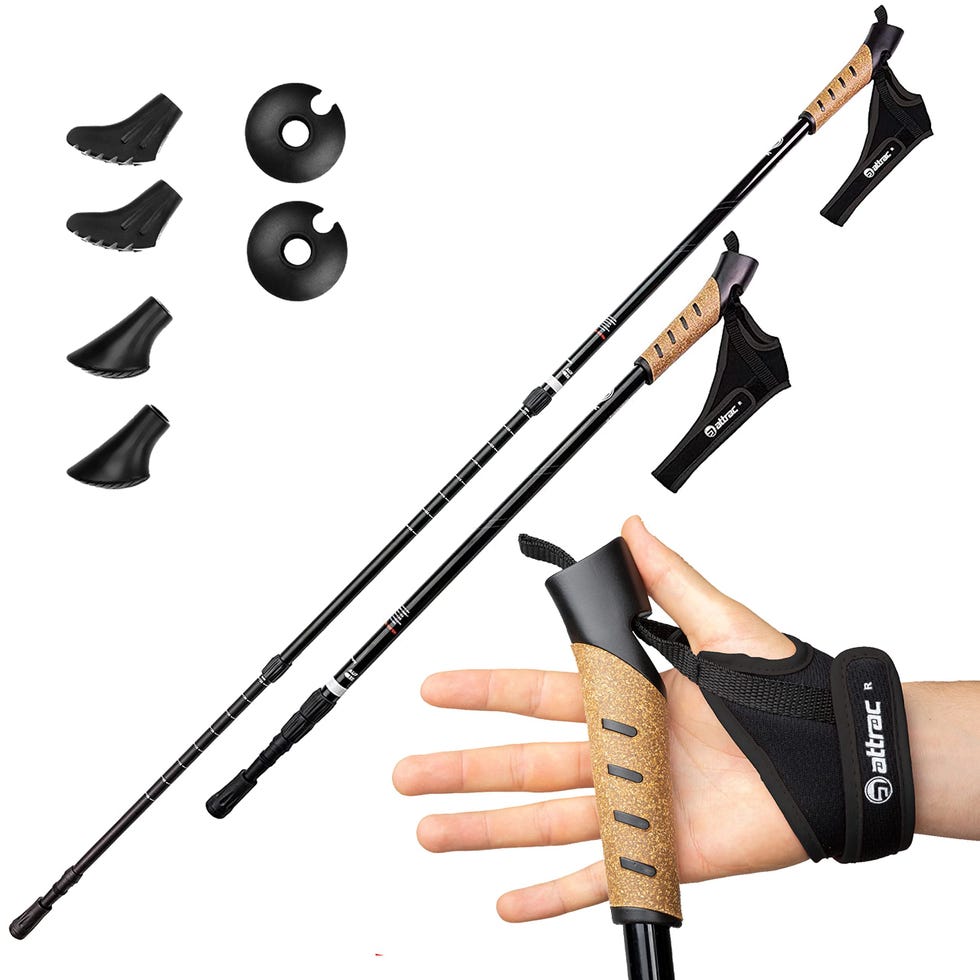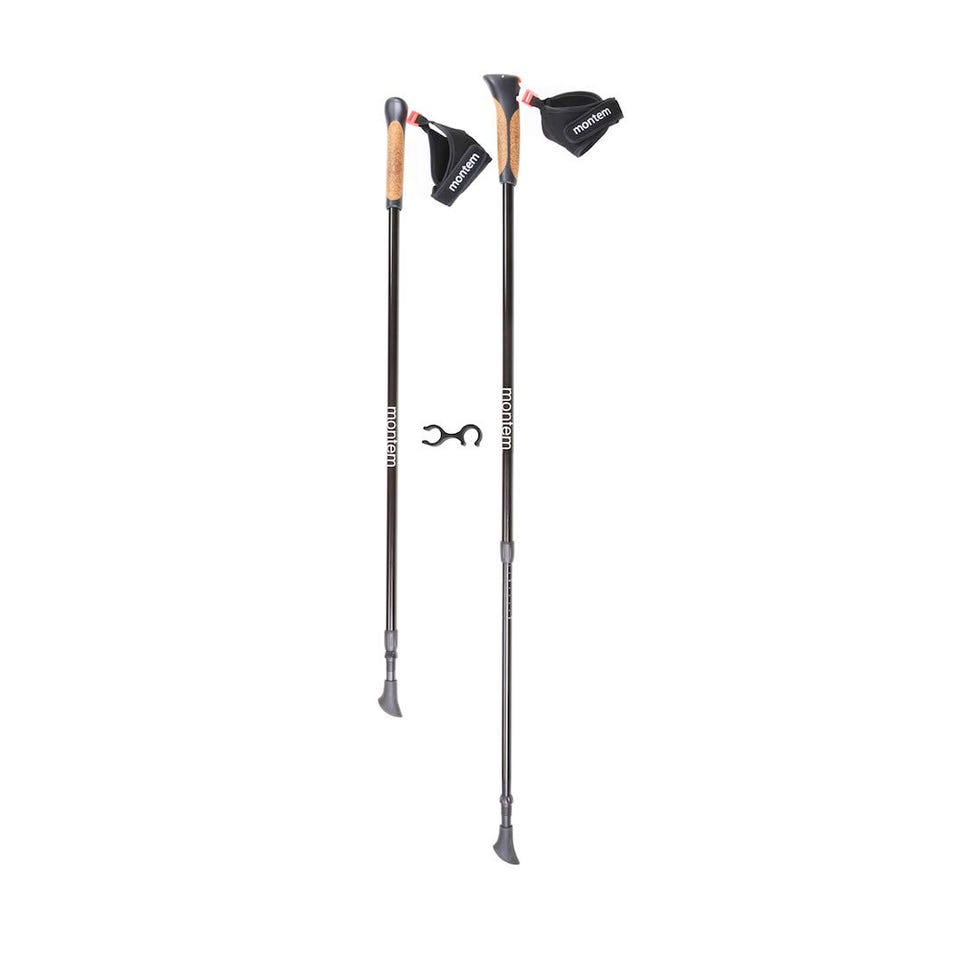In case you missed it, good ol’ fashioned walking is so trendy. You can dabble in cozy cardio, rucking, the 12-3-30 treadmill routine, hot girl walking, and even silent walking. It’s time to add Nordic walking to that list.
But this type of walking has an added bonus: You’ll be working your leg and arm muscles, too, for a full-body workout.
That’s because Nordic walking is, at a basic level, walking with poles. The exercise started as a way for cross-country skiers to keep up their training sans snow, but has evolved into a year-round, any-surface way to walk.
Meet the experts: Malin Svensson, CPT, is an International Nordic Walking Association (INWA) master trainer and coach, author multiple Nordic walking books and guides, and a celebrity trainer. She is also the CEO and founder of Nordic Body Inc. Rachelle Reed, CPT, PhD, is a NASM- and ACSM-certified trainer with a doctorate in exercise physiology.
Nordic walking is popping now likely due to its accessibility and the resurgence of solo outdoor activities from the pandemic, says Malin Svensson, CPT, an International Nordic Walking Association (INWA) master trainer and coach and author of multiple Nordic walking books and guides. “I tell people of all ages and all different fitness levels, and even athletes, to try Nordic walking,” she adds. It’s also excellent for cross training and off-season training for other sports.
Read on to learn how to hop on the Nordic walking wagon, technique tips, what type of gear you need, and all the benefits from those steps, all straight from nordic walking experts.
What is Nordic walking?
Nordic walking uses specific poles to engage the upper body and propel the walker forward, says Svensson. Think of this activity like cross-country skiing but without the snow and skiis. Or, an amped up version of regular walking with Nordic walking poles and a bit more technique to push with your upper body on each step.
“Nordic walking takes fitness walking to a new level by adding poles to produce an incredible upper body workout,” says Svensson. “This workout increases your endurance, strengthens your core, arms, chest, back, buttocks and legs, improves your posture and flexibility and it takes stress off your ankle, knee, and hip joints.”
You can Nordic walk on any type of terrain as long as you have poles. (There is a specific difference between Nordic walking poles and trekking poles, but more on that below!)
When done correctly, adding in poles doesn’t compromise the natural posture during walking or change the gait. Rather, correct Nordic walking technique enhances proper posture, walking form, and pole usage, all while exercising the entire body and boosting aerobic conditioning.
How To Nordic Walk Properly: Basic Technique
As with any new venture, learning the proper technique is key to enjoying the exercise and most importantly, not getting injured.
No matter how often you go, you want to maintain tip-top technique. Svensson recommends focusing on three main areas.
- Opposite arm/leg rhythm: This is just like regular walking, but you do have to be a bit more intentional. You want your regular walking rhythm (opposite arm and leg) to stay the same, even when adding poles. Start by walking and simply dragging the poles behind you as you walk to get the feel of the proper rhythm and the form. Let poles remain by your side and angled back.
- Pole planting: When you plant the pole on the ground, you aren’t planting it perpendicular to the ground, but rather at an angle. This is different than trekking or backpacking with poles, which involves planting the poles at a 90-degree angle with the ground. With Nordic walking, Svensson says to “keep your arm in a handshake position,” with slightly bent elbows that aren’t too tight to the body. As you plant, the poles should make a 45-degree angle with the ground, which allows you to push on the poles, engage your upper body, and propel yourself forward.
- Pole pushing: Aim to push the hand and arm back past the hip and farther if possible to work those triceps. This requires good technique and practice, but also the correct pole length. When you are pushing, your grip should be tight to start so that you can use your force to push. “As you push back, your grip gets softer by the hip,” says Svensson. “If you work toward the full, proper technique, you loosen the grip totally at the end when your arm is completely straight.”
Work it in: Svensson recommends adding in Nordic walking a few times a week as a good starting point and extending from there.
Beginners can do two or three walks a week for about 20 or 30 minutes each time. I
Intermediate walkers with a solid cardio base, try three to four times a week for 30 to 45 minutes for each walk.
Advanced walkers can level up by doing three to five times a week for 45 to 60 minutes of nordic walking.
Benefits Of Nordic Walking
The simple addition of poles and pole planting/pushing technique to your walking route brings so many benefits for your heart, muscles, and overall fitness.
- It’s low impact. Walking in general is a low-impact exercise, but with added poles, it’s even better. “You take the stress off the lower body joints, especially going down hill.” says Svensson. When Nordic walking, you are easing the load on lower joints, as well as easing shock to the feet and the plantar fascia, studies show.
- It’s a full-body workout. When compared to regular walking, Nordic walking provides additional benefits in upper-body strength, a study from the Journal of Sports Science and Medicine found. It doesn’t take long to feel the burn in the arms. You are engaging those upper body muscles with each push off from the poles. In fact, the study concluded that Nordic walking boosts cardio-respiratory fitness, strength, and flexibility outcomes. There are definite strength gains one possible with Nordic walking, which you’ll find out quickly once you give this a try, says exercise physiologist Rachelle Reed, PhD.
- You train balance. By using poles, you can add more stability to walks with each step, so it’s great for people with impaired balance or who are working toward a more intense workout. Nordic walking helps with overall exercise capacity, but also coordination of movements and dynamic balance, studies show. “With Nordic walking, you have four points of contact with the ground, rather than just two,” says Reed. “You are still getting the cardio respiratory benefits in a very approachable, low-impact way.”
- It can improve heart health. Nordic walking definitely counts as structured exercise and brings along the heart healthy benefits of activity. Remember your whole body is moving and engaged; you aren’t just walking, says Reed. In fact, nordic walking improves resting heart rate, blood pressure, maximal oxygen consumption, and more, according to a systematic review.
Nordic Walking Gear Recommendations
To Nordic walk, you don’t need much specialized gear. Grab some comfortable walking sneakers and Nordic walking poles, and you’re set. Nordic walking poles use a glove-like system to wrap around your palms and are adjustable to hit just the right height. The recommended height for poles is about 68 percent of your overall height. It’s a good idea to start there and tinker as you get more comfortable with technique and form.
Also note the materials. You’ll want a lightweight option like aluminum or carbon for the pole and interchangeable tips (a rubber tip is ideal for sidewalks and roads, while a pointed tip is preferred for trails or dirt paths).
FAQs
1. What is the Nordic walking technique?
Getting the Nordic walking technique down can take a bit of practice and coordination. As you practice the planting and pushing of the poles, stay focused on keeping the poles close to the body (your arms and poles shouldn’t be splayed out), landing with the heel then rolling onto the rest of the foot, and the most importantly, keeping that even rhythm, “even when going uphill,” Svensson says, because that’s where the intensity comes from.
“If you maintain that same rhythm up a hill that is going to be a challenge,” she says, “As an instructor, I tell people to keep the rhythm they had on a flat surface. They’ll find that if they keep that rhythm, they do have to work their legs and arms more.” And, pay close attention to posture on the uphill. Yes, a slight full-body lean forward is good, but your back shouldn’t be hunched.
2. What’s the difference between walking and Nordic walking?
With Nordic walking, you are using specific poles that engage the upper body and propel the walker forward, Svensson says. “With conventional walking, you aren’t using poles,” she says. You can also level up your Nordic walking. For example, Svensson teaches a fitness-Nordic walking technique and even a plyometric technique with jumps and other high-intensity moves.
3. Can you Nordic walk on concrete?
Yes you can, but make sure that your poles have rubber, grippy tips on the bottom.
4. Does Nordic walking actually work?
Yes! Benefits include building your cardiovascular health, strengthening upper body muscles while you walk, and adding in extra support and balance, according to Svensson. It’s also a low-impact activity, so it’s great for your joints.
5. How high should Nordic walking sticks be?
The general rule is that your Nordic walking poles should be set to about 68 percent of your height. You don’t have to pull out a ruler, though. Here’s how Svensson recommends measuring:
- Start by standing on a flat surface with whatever shoes you are going to wear for walking.
- Hold the poles with the strap on and correct grip with elbows tucked close under your shoulder.
- Note your elbow and arm position. Your forearm should be at a 90-degree angle with your upper arm. If it’s less than 90, your poles are too high, and if it’s more than 90, they are too low.
6. Does Nordic walking burn more calories than regular walking?
That’s a big yes. You are definitely burning more calories with Nordic walking when compared to conventional walking, because you are using your upper body as well as legs. Nordic walking burned about 20 percent more calories over one mile compared to normal walking on the same course, according to one study. “You will get your heart rate up a little bit more than just doing the same movement without the poles,” Reed says. “So, we can expect a little bit more caloric burn.”








